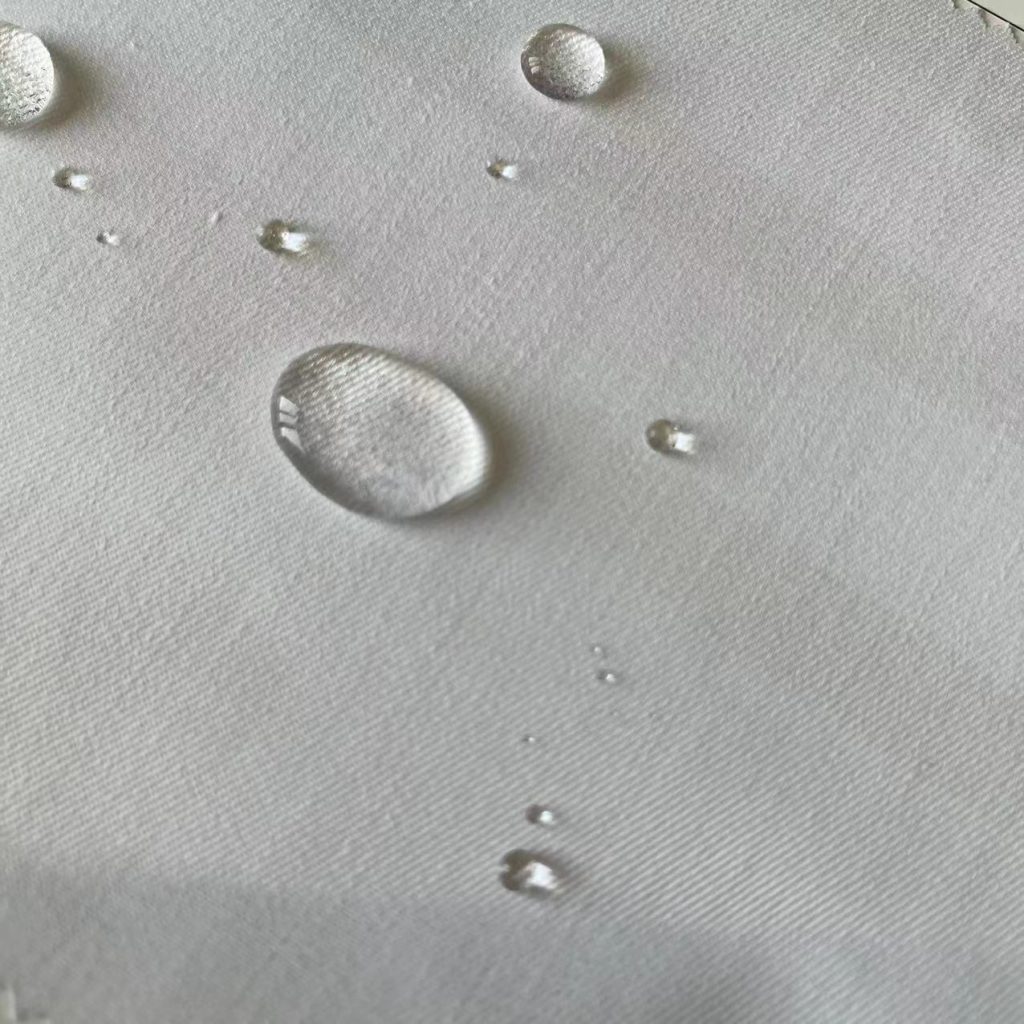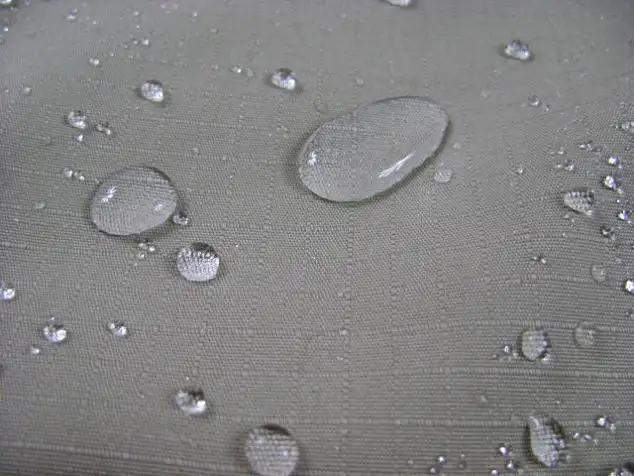Do you know the hidden danger in your waterproof fabrics? The fluoride-based water repellent is effective, but it has a great hidden danger to human health and the environment. But don’t worry! Now we have fluoride-free WR fabrics to provide a safer and more environmentally friendly choice.
Hidden Danger of Fluoride in WR Fabrics
Fluoride compounds are commonly used in waterproofing treatments and have been found to cause serious health issues. Prolonged exposure to these chemicals can cause skeletal fluorosis, a painful condition that damages bones and joints. Additionally, these chemicals can accumulate in the environment and cause long-term ecological risks. Of course, not every exposure to PFAS leads to health risks or severe diseases. However, long-term, consistent exposure to PFAS can cause health problems confirmed to be linked to these chemicals. Therefore, it is essential to pay attention to the necessity of PFAS usage and compliance with content standards to ensure optimal product performance, secure health, and protect the ecological environment. You can learn more about the health impacts of PFAS.
The Emergence of Fluoride-Free WR Fabrics
In response to these concerns, the textile industry has developed fluoride-free waterproofing solutions. These new treatments provide water repellency without the associated health and environmental risks. Fluoride-free WR fabrics are not only safe but also sustainable, which aligns with the growing demand for eco-friendly products. This is part of the larger trend toward eco-friendly textiles.
Fluoride-free water repellents are now primarily categorized into acrylic, silicone, and polyurethane types. Compared to C6 (C8) water repellents, they lack oil repellency, making them unsuitable for triple protection treatments and also have inferior wash durability.
- Acrylics: They offer excellent water repellency and wash durability at a low cost, but have significant color changes, stiff hand feel, and poor adhesion.
- Polyurethanes: They provide good water repellency and hand feel, but they are relatively expensive, require large quantities, and lack wash durability.
- Silicones: They deliver good hand feel and minimal color change, but they have poor water repellency and wash durability.
Some manufacturers blend acrylic and polyurethane water repellents to compensate for each type’s shortcomings and improve the overall cost-effectiveness of fluoride-free water repellents.

Types and Applications of Fluoride-Free WR Fabrics
Fluoride-free WR fabrics come in various types to meet different needs. Fluoride-free water repellents can be applied to any fabric, including woven and knitted fabrics, all-cotton, all-polyester, polyester-cotton blends, nylon, and more. Although the performance of fluoride-free water repellents may not be as high as fluorinated water repellents, they are reasonably priced, do not easily accumulate in biological organisms, degrade easily, and are harmless to humans, making them more environmentally friendly.
Whether you are hiking in the rain or looking for durable, water-resistant clothing, you can find fluoride-free options to meet your needs. Our company can produce a variety of fluoride-free WR fabrics, including:
- All-Cotton Fluoride-Free Fabrics: They are suitable for casual wear and light outdoor activities, offering breathability and comfort.
- Polyester-Cotton Fluoride-Free Fabrics: They combine the natural feel of cotton with the durability of polyester, suitable for workwear, uniforms, and outdoor gear.
- Polyester-Cotton Stretch Fluoride-Free Fabrics: They add elasticity and are perfect for active wear and sportswear, providing better mobility and comfort.
Regulatory Standards: BLUESIGN and OEKO-TEX
Ensuring the safety and sustainability of WR fabrics means following strict regulatory standards. Two of the leading organizations that set comprehensive criteria for textile products are BLUESIGN and OEKO-TEX. These standards require the elimination of harmful substances, including fluorides, so the fabrics are safe for consumers and the environment.
BLUESIGN®
- As of July 2024, the BLUESIGN® FINDER platform has completed its PFAS FREE goal, removing all related chemicals.
- The BLUESIGN® ACADEMY has updated existing PFAS phase-out guideline documents. They’ve supplemented and clarified previous definitions, expanded the phase-out range to PTFE materials, and further specified limited exceptional applications (such as PPE).
OEKO-TEX®
- OEKO-TEX® has adopted total fluorine in place of extractable organic fluorine (EOF) testing methods.
- Starting January 1, 2024, OEKO-TEX® STANDARD 100, ECO PASSPORT, LEATHER STANDARD, and ORGANIC COTTON certifications will adopt a new limit value of 100 mg/kg. This update ensures that all OEKO-TEX® certifications comply with US PFAS-related regulations.
Brands Using Fluoride-Free WR Fabrics
Several well-known clothing brands have already switched to fluoride-free WR fabrics. These companies understand the importance of sustainability and safety. For example, Patagonia offers PFC-free products that perform well without compromising environmental standards. Workwear brands like Carhartt and Dickies also offer fluoride-free options to meet industry standards and customer demand. These brands are leading the way in the industry by prioritizing health and environmental concerns over conventional waterproofing methods.
Summary
Switching to fluoride-free WR fabrics is a smart choice for your health and the environment. Join us in embracing this eco-friendly alternative and enjoy the benefits of safe, effective water repellency.
Additional Resources
For more information on PFAS and their impact on health and the environment, check out these external resources:

